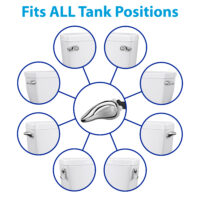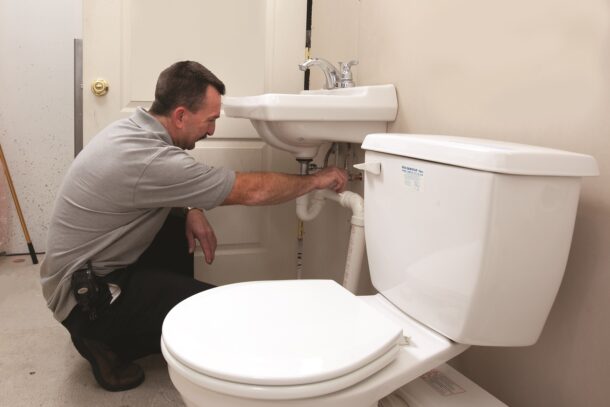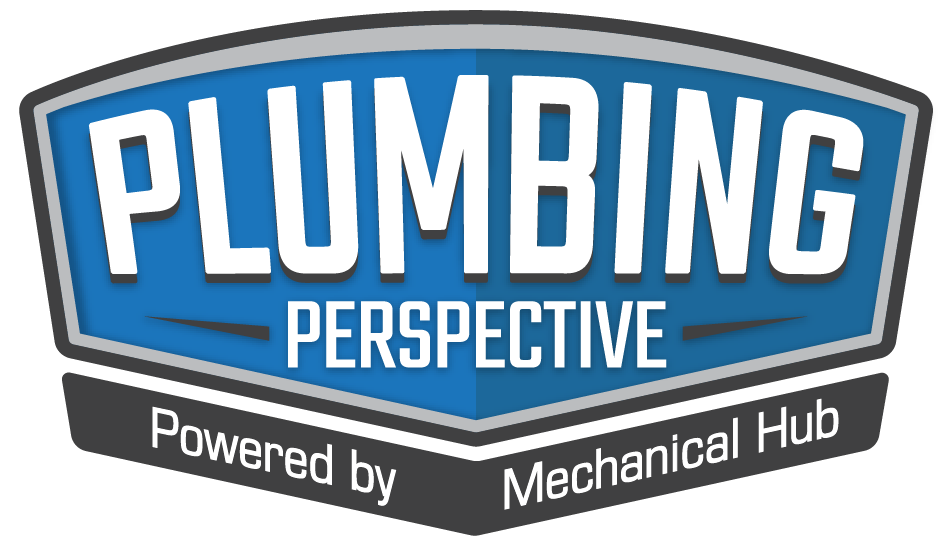One of the most frequent issues with domestic plumbing is inadequate water pressure, regardless of whether you use city water or well water. Old pipes and insufficient well water flow are two factors that may contribute to a decline in water pressure in residence. Several solutions exist depending on the issue’s root, but a constant Read more
Plumbing

One of the most frequent issues with domestic plumbing is inadequate water pressure, regardless of whether you use city water or well water. Old pipes and insufficient well water flow are two factors that may contribute to a decline in water pressure in residence. Several solutions exist depending on the issue’s root, but a constant pressure system well can increase your water pressure to the desired levels.
Let’s examine in greater detail what a constant pressure system for wells is and how it might benefit you.
What Is A Constant Pressure System?
A constant pressure system is a device that helps increase the pressure of the water where you install it. A constant pressure system needs a pressure tank, a pump, and a pressure switch or sensor, just like a standard pump system. The pressure sensor notifies the pump control panel when there is a change in system pressure. The pump is then instructed to operate at a pace necessary to maintain optimal pressure and volume by a controller. Depending on the particular system, the pressure setting can be changed at either the pressure sensor or the motor controller.

Conventional Water System Vs. Constant Pressure System
In contrast to a conventional system, the pressure tank in a constant pressure system is often significantly smaller. It only holds a tiny amount of water and primarily serves as a pressure buffer. Similar to those in a submersible system, the pumps utilized here are constant-pressure. The distinction is that the pump’s motor operates at varying speeds based on water demand. A variable frequency motor controller regulates the speed of the motor.
How Can A Constant Pressure System Help You
A constant pressure system can help you in the following ways:
It Will Help You Save Space, Energy, And Money
Considering the space you have in your home, and these tanks can be made to any size, you may save a ton of room in your home by using constant-pressure water systems, which require significantly smaller tanks than conventional systems. You will only occupy more space than necessary in this approach.
A system with constant pressure will aid in energy conservation. Powering your home’s appliances requires less energy since it enables them to operate more effectively.
Additionally, the speed of the pump is determined by the water demand in your home, so it will operate more efficiently during months when you use less water than usual. You may experience a decrease in your energy costs, and as a result, saving you money.
It Can Be Useful In Times Of High Water Demand
When the level of water and pressure in the reservoir drop, a typical well pump will replenish the tank with water. When you turn on a faucet, run a load of laundry, flush a toilet, or shower, the pressure in your tank will decrease.
Your water pressure will decrease if you attempt to do more than one of these simultaneously with a regular pump.
The water level in your tank is kept constant by constant-pressure water systems. This will prevent pressure drops when using many water appliances at once. But you don’t have to worry about these issues, owing to the constant pressure water system.
It Creates An Efficient System
Constant pressure water systems will make your systems, particularly your water treatment system, operate more effectively. For water treatment systems, low water pressure is a significant barrier.
For them to function correctly, water softening or filtering systems need a particular amount of pressure. Water systems with constant pressure control the pressure at all times, assuring that it is adequate for these filters to function effectively.
Conclusion
Robust and reliable water pressure is crucial for everyday household activities and tasks. Your appliances will function as efficiently as ever with constant-pressure water systems, as you’ll always have high-quality water pressure.

Let’s face it: no one can work forever. After years of building and managing your HVAC business, you will have to pass the baton to a successor at some point. As the baby boomers generation ages, it’s a cold hard fact that many contractors can no longer keep up with the ever-changing demands of the Read more
Let’s face it: no one can work forever. After years of building and managing your HVAC business, you will have to pass the baton to a successor at some point.
As the baby boomers generation ages, it’s a cold hard fact that many contractors can no longer keep up with the ever-changing demands of the heating and cooling industry. Today, owners of HVAC and other contracting businesses are retiring in droves to move on to the next chapter of their lives. Couple that with record-breaking levels of merger and acquisition (“M&A”) activity in the HVAC sector, and owners have many considerations and opportunities to consider when succession planning.

How prepared are you for that big day in your future?
In today’s dynamic business environment, managing risks associated with planned and unplanned departures is a business imperative that contractors can no longer afford to ignore. Decades-old, highly successful and well-established HVAC businesses, in particular, need proactive succession planning to ensure continued business growth.
Succession planning, however, can be a complex undertaking. It involves identifying and training your successor to ensure your retirement does not disrupt operations. Additionally, it requires creating a robust strategy to maximize the business’s economic value during the ownership transition and manage any taxation and compliance implications. Succession planning also includes considering M&A options for your business.
Throughout the years, we’ve seen how the lack of a well-thought-out succession plan has led to severe financial damages for many HVAC companies. With this in mind, businesses must develop long-term strategies to mitigate risks and ensure a successful transition.
The Importance of Succession Planning for Your HVAC Business
Whether you have no plans of retiring anytime soon, the future is unpredictable. Having a solid, documented succession plan is crucial to your business’s health and fate.
Succession planning allows you to:
- Ensure your management team is aligned with your plans and goals for the company’s future.
- Stay focused on a long-term, bigger-picture vision for the business.
- Protect the business in the event of a sudden major life-changing event.
- Assess parts of your business that may need special attention for your succession plan to be effective.
No matter the size or structure of your contracting business, having a defined succession plan is critical to selecting and developing the best leaders. Extending tenures may prevent the impending headwind, but there is no substitute for a viable long-term succession strategy. After all, business leaders, irrespective of their stature, would inevitably need to make way for the younger generation.
3 Insightful and Actionable Succession Planning Steps
Every business situation requires a different exit strategy. Some existing business owners may want to step out of their position for good. While some would prefer to stay minimally involved to ensure the company’s future success.
Whether you plan to pass your company on to one of your children or trusted employees or sell it to an outside party, succession planning is paramount.
Here are three important things to consider as you plan for your HVAC business succession:
-
Decide Who Will Take Over
Identify who will take the reins when you retire, and give them the opportunity to develop their skills and experience to successfully replace you in the future. Every aspect of business operations should be clearly defined, including detailed role definitions for key decision-makers at various levels. This is especially true for family-owned businesses.
With any luck, you’ve had capable family members or employees who have established themselves in the specific roles they will eventually assume.
If your business is family-owned and operated, it is important to talk to your family members before making succession choices. Ask them if they are interested in taking over the business, and determine if they have the capability to effectively run the company.
Starting your succession plan sooner rather than later gives you more time to hone the knowledge and skills they will need to take over.
On the other hand, if you’ve been anticipating that one of your employees will buy out your business, make sure they have the financial capacity to give you market value for your business along with the skills to sustain its success. Internal transfers are often structured where the owners are paid over time through the profits of the business, so it is important to really assess if your successor has the skills to run the company profitably without you going forward. Otherwise, you’re giving your business to someone who can put your long-term financial security at risk if they cannot execute successfully. This is why many business owners look to third-party M&A to transition their business.
As retirement looms, you must also train them to do the jobs well to ensure that a steady hand will lead from the top down.
-
Determine When the Transition Will Happen
You can’t just flip a switch and hand over the job to your successor with little notice. Think long-term and set a date for your last day in the company. The ownership transition should begin before your last day to give your successor enough time to get accustomed to their new role.
As the existing business owner, you must also invest in the professional development of your succession choice to help them gain valuable experience and boost their soft skills. Let them assume different responsibilities to assess where they might need some additional training and development.
If you’re in a position where you don’t have a qualified candidate to take over, then you need to craft a broader succession plan that enlists a third party to purchase the business. Make sure to find a buyer who values your business the way you do, has the ability to demonstrate consistent earnings and will continue its legacy when you are no longer there.
-
Consider a merger and acquisition (M&A)
When one entity buys another entity and folds it into their organization, that is referred to as an acquisition. In a merger, two equal companies join to form another entity or co-branded company. The timing has never been more perfect for HVAC businesses to consider M&A. More investors are looking for lower-middle-market organizations for M&A activity, and the benefits to you, as a small business owner, are immense.
Rewarding financial returns are one of the reasons business owners turn to M&A. During an M&A, you’ll be able to enhance the price you receive for your company, allowing you to cash in on your hard-earned success and retire with ease. There are also opportunities to create generational wealth by selling portions of your business to a private equity firm. In this scenario, you are able to continue investing, you stay involved in running your company, and you work with the majority owner to generate increased value for your business. Eventually, you’ll be able to liquidate your equity at a larger amount in this second sale of the business.
If you are interested in M&A, it’s never too early to start planning. Price isn’t the only thing to focus on. From determining timing, better understanding your customer relationships and determining what to do with your team, there are seven things to consider when selling your company.
Ignite A Big-Picture Mindset
Changes in the HVAC business happen fast. But through effective succession planning and considering M&A options, you can ensure business continuity. Don’t forget to call in the experts for help with your company’s succession planning. Look for a team with many years of experience, diverse business background and a proven track record in the M&A industry.
Need help with your company’s succession planning? The experts at Align BA are happy to advise you on the best way to create a strong leadership pipeline.
 About the Author: Dena Jalbert is at the forefront of executive leadership within the M&A industry. She is also an award-winning entrepreneur, a mother and a philanthropist. Dena is an outgoing, high-performing, and deeply analytical leader who is passionate about driving business growth through financial discipline, innovation and creativity. Dena is a proven leader whose distinction interlaces a wider-view of business needs to connect the dots between data and business growth strategy. It is this unique strength that has led to repeated successes throughout her career, enabling a different and fresh perspective in building and leading organizations — utilizing innovative strategies to deliver transformations in operations and business results. As a mother of two young girls, Dena is determined to do what she can to advance the opportunities of young girls and women throughout Central Florida.
About the Author: Dena Jalbert is at the forefront of executive leadership within the M&A industry. She is also an award-winning entrepreneur, a mother and a philanthropist. Dena is an outgoing, high-performing, and deeply analytical leader who is passionate about driving business growth through financial discipline, innovation and creativity. Dena is a proven leader whose distinction interlaces a wider-view of business needs to connect the dots between data and business growth strategy. It is this unique strength that has led to repeated successes throughout her career, enabling a different and fresh perspective in building and leading organizations — utilizing innovative strategies to deliver transformations in operations and business results. As a mother of two young girls, Dena is determined to do what she can to advance the opportunities of young girls and women throughout Central Florida.

Jones Stephens has recently introduced a new 8-way tank lever that is designed to be a universal fit. This 8-way tank lever is the ultimate universal lever, allowing for installation on any brand of toilet – front, angle, or side mount. They work on both left and right side flush and work with 2” Read more
Jones Stephens has recently introduced a new 8-way tank lever that is designed to be a universal fit. This 8-way tank lever is the ultimate universal lever, allowing for installation on any brand of toilet – front, angle, or side mount.

They work on both left and right side flush and work with 2” or 3” style flush valves as well as cannister style flush mechanisms. They are available in 3 stylish finishes designed to match any project’s décor.
Jones Stephens’ Universal Tank Levers are constructed of high impact plastic that will resist breaking and corrosion. They are easy to install, with no need to bend the arm. The program is carded and conveniently designed for point-of-purchase display.
For more information visit Jones Stephens.

The International Association of Plumbing and Mechanical Officials (IAPMO) was pleased to have participated in the Plumbing and Heating event at WorldSkills Competition 2022 Special Edition (WSC2022SE), Nov. 2-4 at GROHE Technikum in Lahr, Germany. The competition showcased national champions from 20 WorldSkills member countries. IAPMO CEO and World Plumbing Council (WPC) Deputy Chair Dave Read more
 The International Association of Plumbing and Mechanical Officials (IAPMO) was pleased to have participated in the Plumbing and Heating event at WorldSkills Competition 2022 Special Edition (WSC2022SE), Nov. 2-4 at GROHE Technikum in Lahr, Germany. The competition showcased national champions from 20 WorldSkills member countries.
The International Association of Plumbing and Mechanical Officials (IAPMO) was pleased to have participated in the Plumbing and Heating event at WorldSkills Competition 2022 Special Edition (WSC2022SE), Nov. 2-4 at GROHE Technikum in Lahr, Germany. The competition showcased national champions from 20 WorldSkills member countries.
IAPMO CEO and World Plumbing Council (WPC) Deputy Chair Dave Viola relished the opportunity to present medals to the winning champions, concluding a thrilling three-day competition at the celebratory closing ceremony on Saturday, Nov. 5. Viola was joined by IAPMO Chief Administrative Officer and WPC Secretariat Gaby Davis, as well as IAPMO President David Gans and Vice President Steve Panelli, both experiencing a WorldSkills competition for the first time.

Plumbing and Heating competitor Florian Bliem of Austria captured the gold. Joint silver medals were awarded to Tom Pean of France and Marton Offner of Hungary, and the bronze medal was won by Tai-Yu Chen of Chinese Taipei.

Dave Viola
Indicative of the high standard of this year’s long-awaited, rescheduled competition, six additional entrants were awarded medallions for achieving a final assessment above WorldSkills’ benchmark for excellence: Sangyeop Kim (Korea), Saku Hurtig (Finland), Luca Herzog (Switzerland), Connor Cruden (United Kingdom), Fabian Grün (Germany), and Yuto Itahashi (Japan).
“What we are seeing today at WorldSkills is the best of the best, showcasing their skills and inspiring other people to do their best quality work,” Gans said. “We are looking at the future of plumbing, and plumbers. These are the young men and women who are going to take plumbing to the next level and help change the world.”

The event also showcased a new Plumbing Champions training activity, sponsored by the World Plumbing Council and delivered by the International Water, Sanitation and Hygiene Foundation (IWSH), charitable arm of The IAPMO Group. Three young students, accompanied by one mentor and one interpreter — all from Ukraine — were sponsored to participate in an educational workshop completing the same test project as was tackled in the WorldSkills competition, guided and supported by technical experts from IAPMO and GROHE.

Mayor of the city of Lahr Markus Ibert paid a special tribute to the Ukrainian group in his closing remarks.
“I would like to thank all participants who made this special event possible, and I wish you all the best for your ongoing life; success, and peace — especially to our guests from Ukraine. To you, to your families and your neighbors, have a good time, in peace, and with benefits, for a good life.”
The biennial WorldSkills international competition returns in September 2024, where it will be hosted in Lyon, France.
For more information about WorldSkills, visit https://worldskills.org/.

Transitioning from working for an employer to starting your own business is a big decision. It should be made with seriousness, as there are a lot of factors to consider. But if you’re passionate about plumbing and ready to be your own boss, then starting your own plumbing business may be the right move for Read more
Transitioning from working for an employer to starting your own business is a big decision. It should be made with seriousness, as there are a lot of factors to consider. But if you’re passionate about plumbing and ready to be your own boss, then starting your own plumbing business may be the right move for you. Here’s what you need to know to transition from employee to entrepreneur.

Do Your Market Research
The first step in starting any business is to do your market research. This is especially important for a plumbing business, as you need to ensure enough demand for your services in your area. Talk to other plumbers in your area to see how busy they are and what areas of town they service. You can also talk to potential customers to see if they would be interested in using your services. This market research will give you a good idea of whether or not starting your own plumbing business is a viable option.
Plan Your Finances
Financial planning is crucial if you start your own business. First, you’ll need to have enough money to cover your living expenses for at least six months and the start-up costs for your business. These start-up costs can include anything from licenses and permits to office space and marketing materials. Once you clearly understand your financial situation, you can begin to create a business plan.
Choose Your Business Structure
There are several different business structures you can choose from when starting your own plumbing business, including sole proprietorship, partnership, limited liability company (LLC), and corporation. Each option has its pros and cons, so it’s essential to research and select the structure that makes the most sense for your unique business.
Get Licensed and Insured
To operate legally, all businesses must have the proper licenses and insurance. Plumbing business licenses and insurance requirements vary from state to state, so check with your local government offices for more information. Once you have the necessary permits and insurance, you’ll be ready to start marketing your business!
Offer A Unique Service
One of the best ways to make your plumbing business stand out from the competition is to offer a unique service they don’t have. This could be anything from drain cleaning to septic tank maintenance. By providing a service that other plumbers in your area don’t, you’ll be able to attract more customers and grow your business more quickly.
Market Your Business
Several ways to market a plumbing business include online marketing, print advertising, direct mail campaigns, and more. When developing your marketing strategy, focus on targeting your ideal customer base. For example, if you want to attract residential customers, then online ads targeting homeowners in your area would be an excellent place to start.
Transitioning from working for someone else to starting your own plumbing business is a big decision—but it can also be gratifying. By following these steps and doing your research ahead of time, you’ll be well on your way to making your entrepreneurial dreams a reality!
